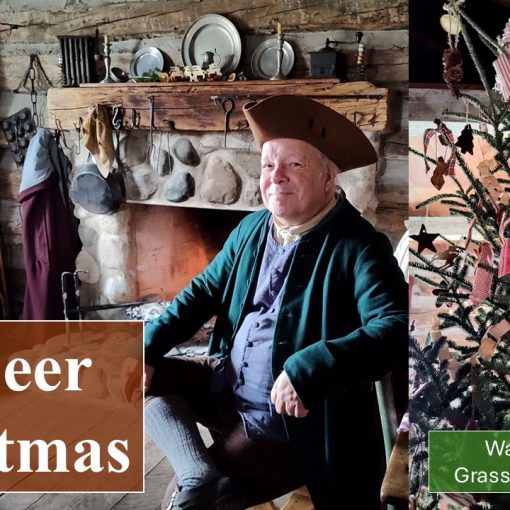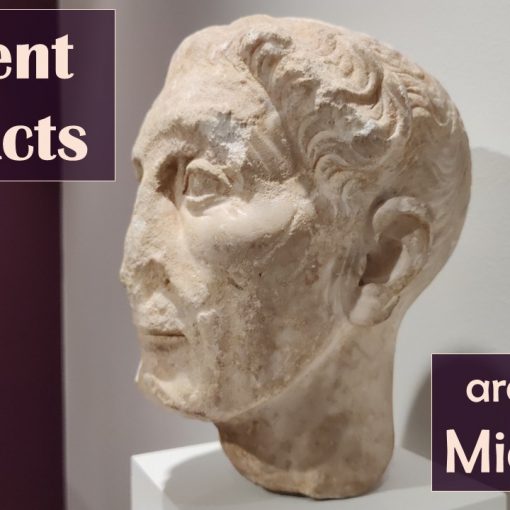Fifty-six years after the United States had become a nation, Calvin Snell built his home along US-12, the Chicago Road, in the Michigan Territory. From 1832-1843 Calvin Snell offered meals and rest for people making the five day stage coach journey from Chicago to Detroit. Later it was named “Walker Tavern” and had been the center of activity in the settlement of Cambridge Junction in the Irish Hills area. Locals and travelers would gather at Walker Tavern, which also served as the post office. Join us as we walk through this threshold of history and witness the renovated Walker Tavern!
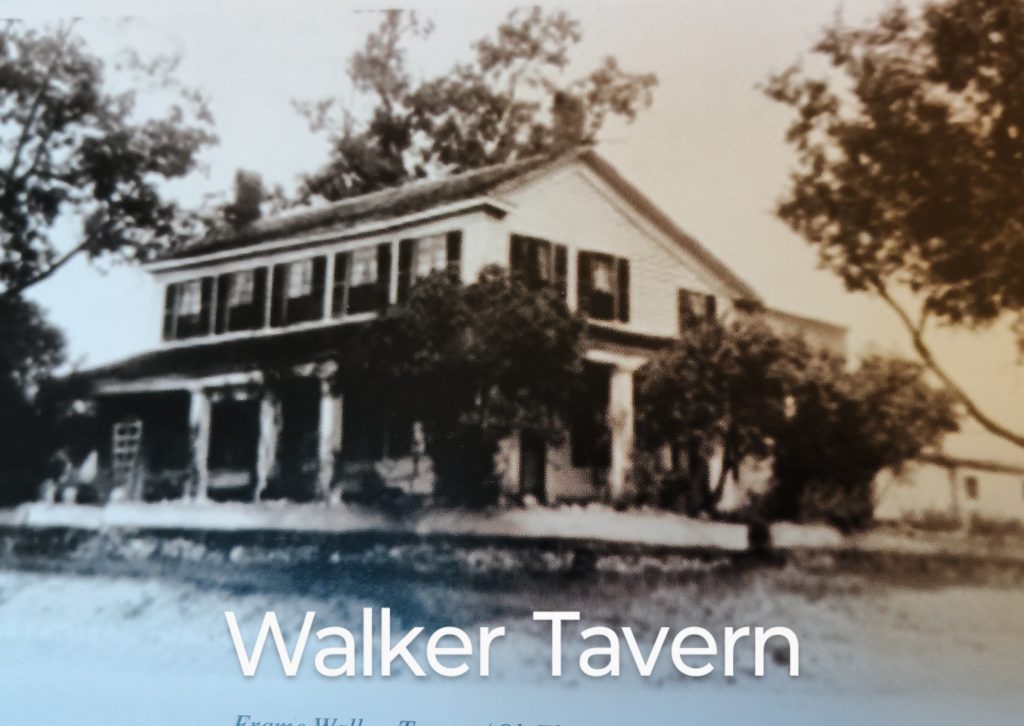
“Why are there two Walker Taverns?” I asked Chuck as we pulled into a Cambridge Junction parking lot across the street. “With business booming, Walker built a three story, brick hotel across the street from his tavern in 1853.” Chuck answered matter-of-factly. I am constantly dazzled by my husband’s knowledge and memory.
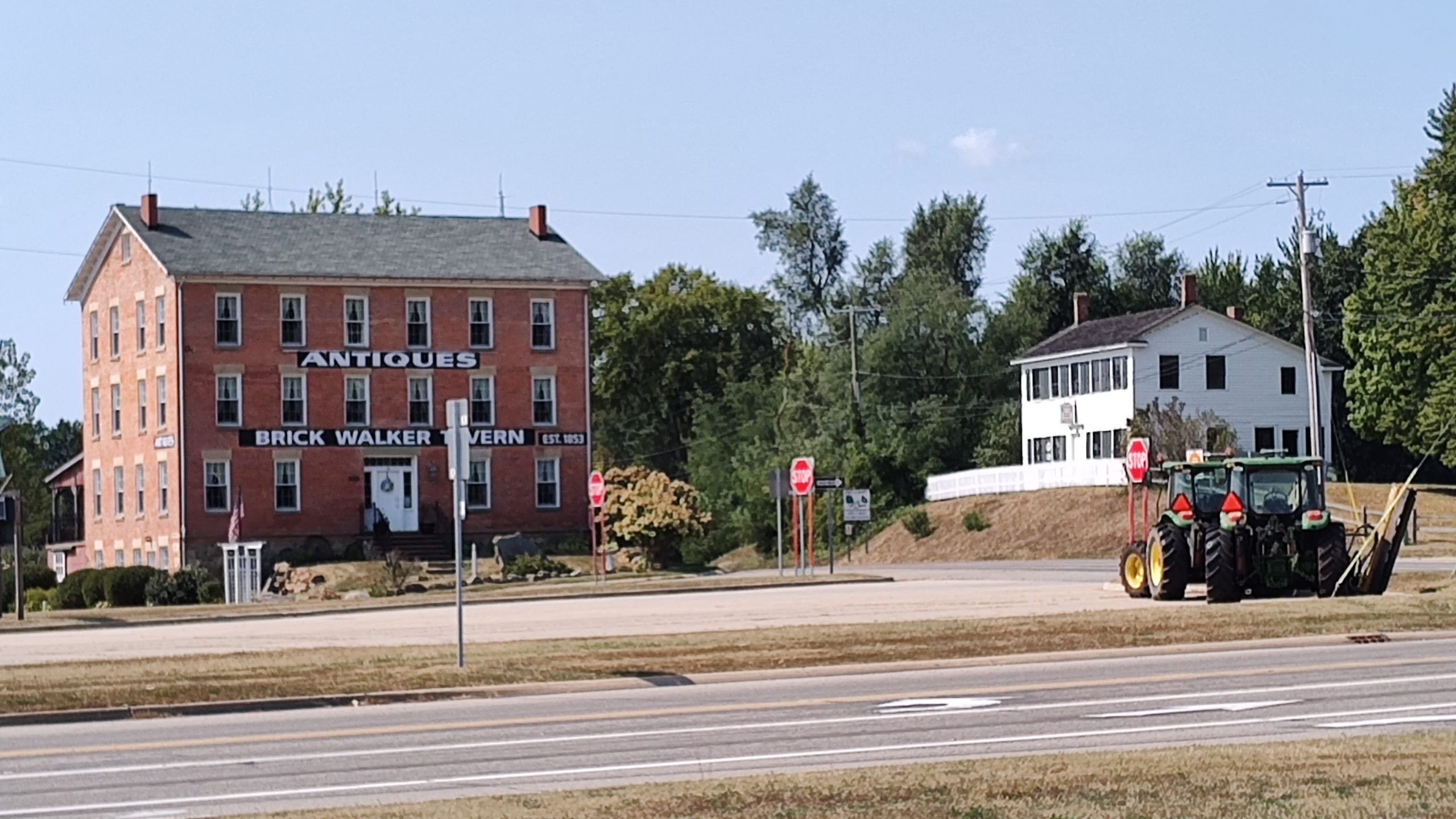
I paused and imagined stage coaches, and later early cars, clustered around this corner in Cambridge Junction. It had been the one-stop-away from Detroit location where travelers could rest.
Early Travel Along US-12
Our nation’s westward expansion, and commerce had depended upon this 212 mile route, connecting people between Detroit and Chicago.
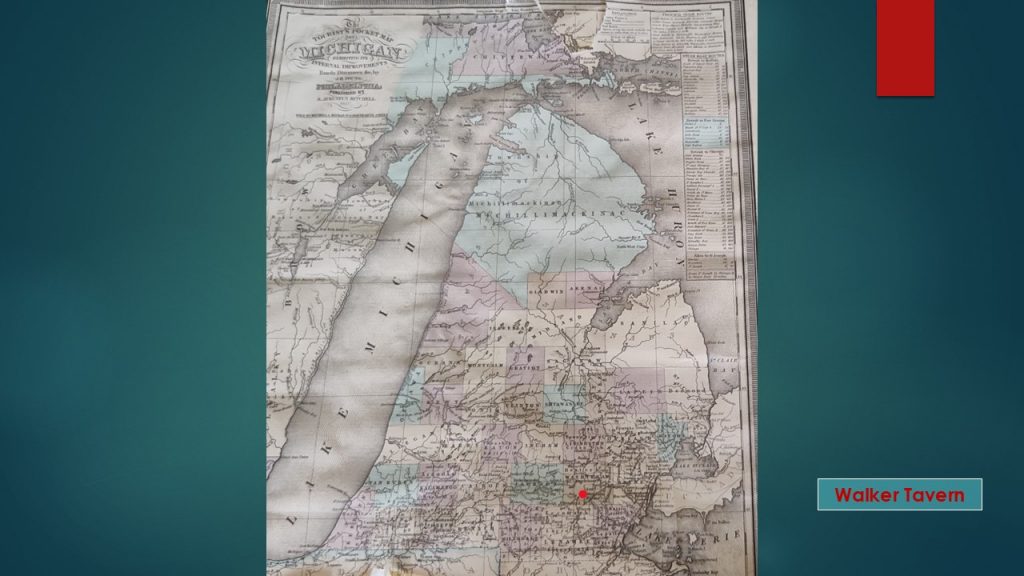
This 1837 map shows how crowded the southern portion of the new State had been.
Photo Credit: Department of Natural Resources – Cambridge Junction State Park
With curiosity, Chuck and I made our way toward the restored tavern where we met Amy, the museum docent. She offered us a ride across the property in her golf cart and escorted us over the threshold of history.
Sylvester and Lucy Walker
Sylvester Walker and his wife, Lucy, had moved west from their innkeeper’s job in Cooperstown, New York to Cambridge Junction, Michigan becoming the village’s first postmasters in 1841. In 1843 they had purchased the white clapboard tavern from Calvin Snell, naming it “Walker Tavern.” Soon they had earned a reputation as “the finest hostelry between Detroit and Chicago.”

Room and Board
The term “room and board” had started with taverns across the pond, in England, and continued here in Colonial America. The ‘board’ had been used to serve the meal of beans, a pickle and cornbread for twenty-five cents. A person could balance the board on one’s knees. When finished the barkeep would wipe it off and hang it on the wall. Some taverns had plates nailed to the table, so they wouldn’t be stolen. These had not been washed between customers.
An overnight stay in a ‘room’ would cost $0.25 – $0.50. Today, fifty cents sounds cheap, but back in the 1840’s an acre of land had cost $1.25. So, an overnight stay had been a luxury, especially for a weary stage coach passenger. The tavern’s wooden steps had shown wear with an indentation running across the center of each riser. How many people have climbed these stairs? I silently wondered.
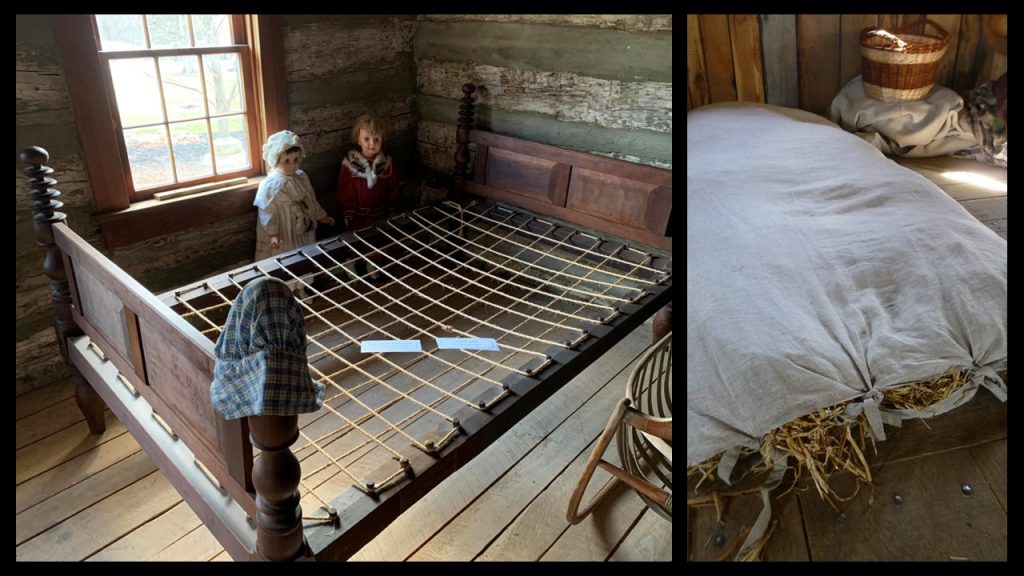
What were these ‘luxury’ accommodations? Well, there were three large rooms upstairs where up to seventeen individuals could rest upon roped beds and straw mattresses. The expression, “Sleep Tight,” actually came from people tightening their ropes on their wooden bed frame. The saying, “I’m going to hit the hay,” had started with people swatting at their hay mattresses to scare the bugs out. “Don’t let the bed bugs bite.” had also originated during this era.
The Walker Tavern’s sleeping quarters were often overcrowded. A blanket would be hung by a rope to separate women from men in the large dormitory. Sometimes, one would have to share a bed with a complete stranger!
Post Box
“Well, this is something I did not know until I was working here.” Amy, the museum docent, gestured to the box on the wall. “The postmaster was Sylvester Walker, because he was the owner of the stage coach stop (Walker Tavern). That was the person responsible to receive the mail from the stage coach driver.” Amy swung the door open to reveal mail slots inside the box. “When he (Sylvester) would receive the mail, he would pay for all of it to the stage coach driver. And then it would be locked in a mailbox area for the local people to come. When they received their mail, they would have to pay Mr. Walker.”
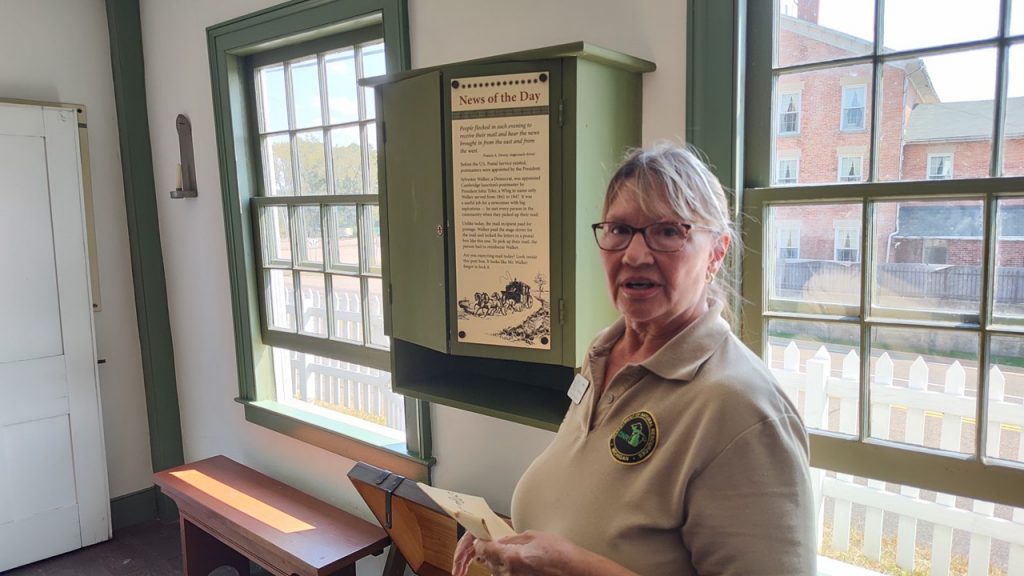
“Here at the Walker Tavern we even have some replicas of actual archived letters that people had written and sent from here.” Amy lifted the yellow paper, “This was a letter from Fidelia to Abigail, dated 1840.” Amy began to read, “Dear Mother, In haste I take my pen to address a few lines to you. Far distance from us you are still remembered with affectionate regard by your children.” Amy folded the letter, “I just think they wrote so beautifully back then.” She opened the note and admired the script and wording of the message which had been written nearly two centuries ago.
The Dewey Family (1865 – 1921)
When Sylvester had died in 1865, Lucy had sold the tavern to Francis A. Dewey, who had once been employed as a a stage coach driver. Dewey had often hosted gatherings for locals. As a historian, Dewey had written down the stories of his community members and travelers he’d met. These tales had been added into volumes of Michigan Pioneer and Historical Society Collections.
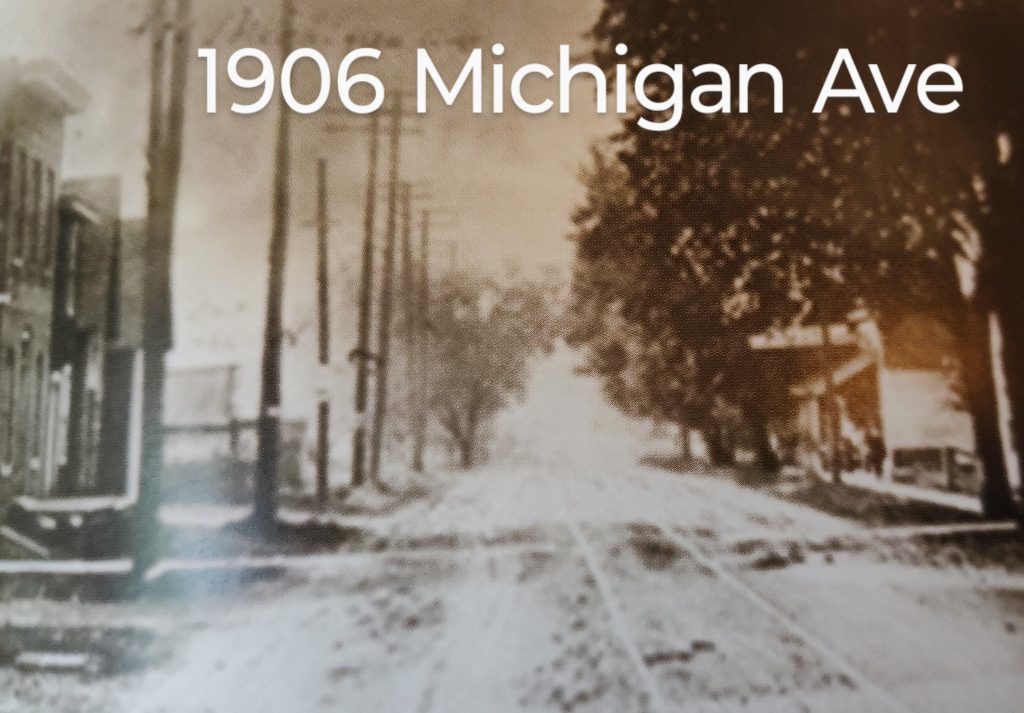
Photo Credit: “Michigan’s US-12 Heritage Trail”
The Walker Tavern property had a wonderful reputation, so all three generations of the Dewey family held onto the name, “Walker.”
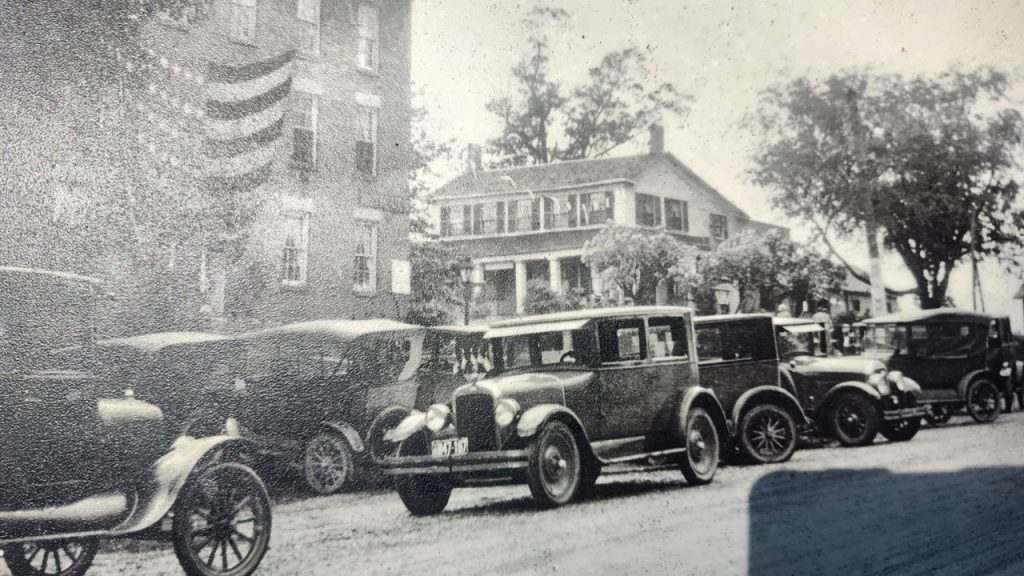
The 1912 “Taft Executive Order Flag” reveals the approximate year of this photo.
Photo Credit: “Michigan’s US-12 Heritage Trail”
The Hewitt Family (1921 -1965)
Reverend Hewitt had desired a summer home in Irish Hills to provide a break from his antique dealings in Dearborn. Charmed by history, Reverend Frederick Hewitt and his wife, Edna, had purchased the Walker Tavern as a tourist attraction in 1921. Just as the stock market crashed in 1929, his son James had accomplished the task of building the family vacation home nearby the tavern site.
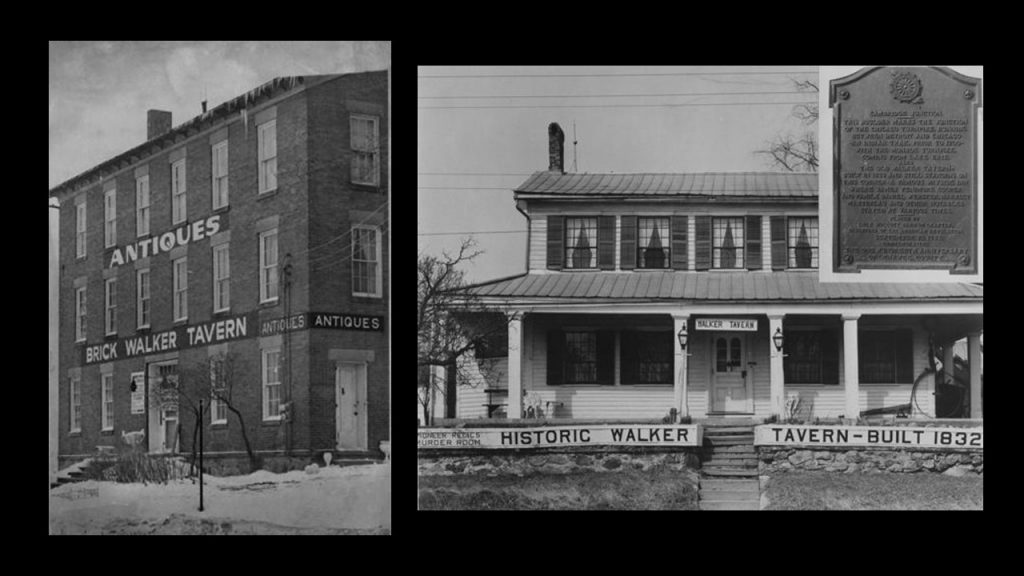
With great financial losses, Hewitt had sold his Dearborn house and focused his energy in Irish Hills. Hewitt had created a museum, an antique shop and a restaurant. Hewitt felt that motorists would like to see a time honored tavern as they coursed across the state of Michigan.
For forty-four years the Hewitt family had served guests, maintaining the old-style charm. In 1960 Hewitt’s daughter, Jeanne Keith, had proposed the Walker Tavern and Hotel as a site for a new park that the Department of Conservation had been eager to build. Today this government entity is known as Michigan Department of Natural Resources. They care for the property and host school groups and visitors for a walk through history.
Our Visit To The Walker Tavern
The white-washed, clapboard has seen travelers cross it’s threshold for 192 years. I felt fortunate to be in the ranks of its long history as I stepped into Walker Tavern.
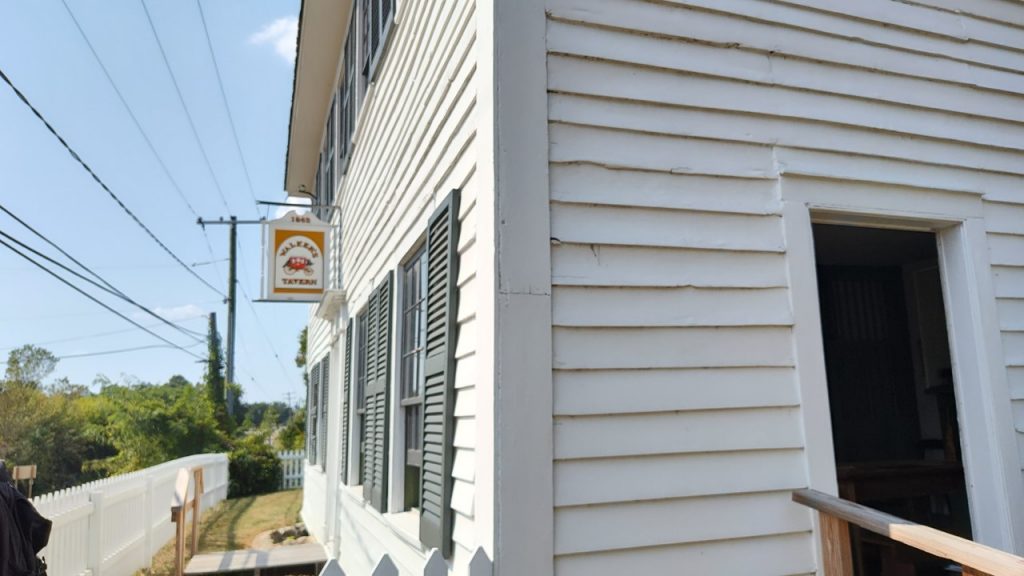
We entered ‘the mud room’ where one could hang their coat and wipe their boots. The next room was the parlor where women-folk could have tea while sewing or knitting. Their conversations ranged from household tasks to current news and, of course, relationships.
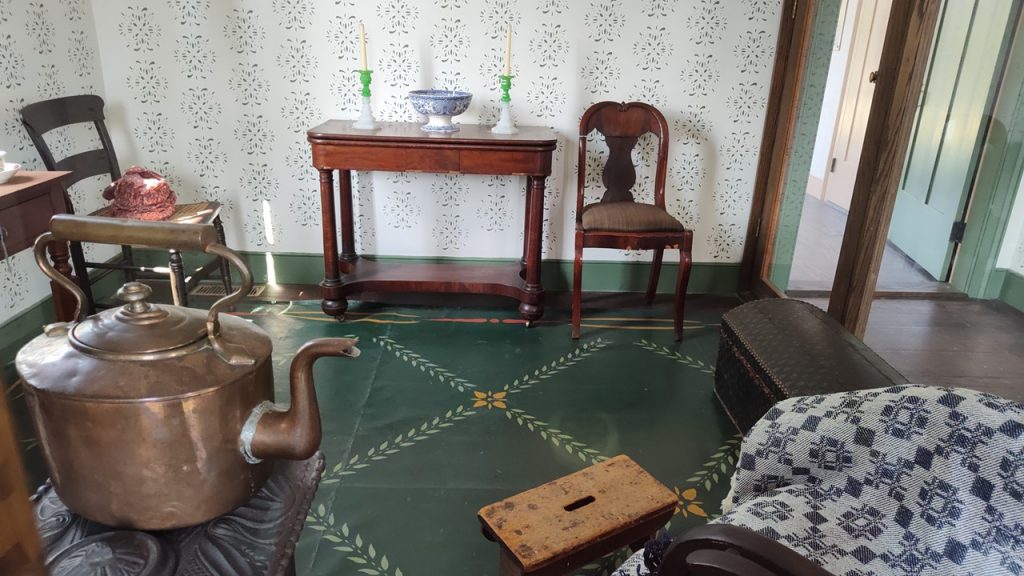
Through the hall, past the stairway sat the ‘bar,’ so named for the bars which had secured the liquor after closing. The name “Bar” has carried into this century as a name for any drinking establishment.
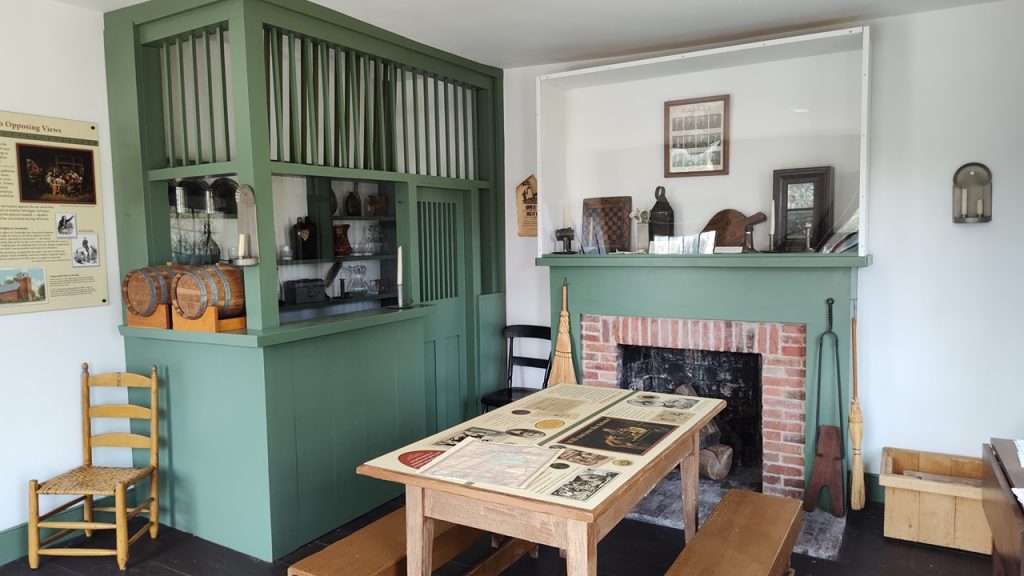
Locals and travelers alike would gather to discuss and debate politics, play checkers, smoke, drink and even attend church.
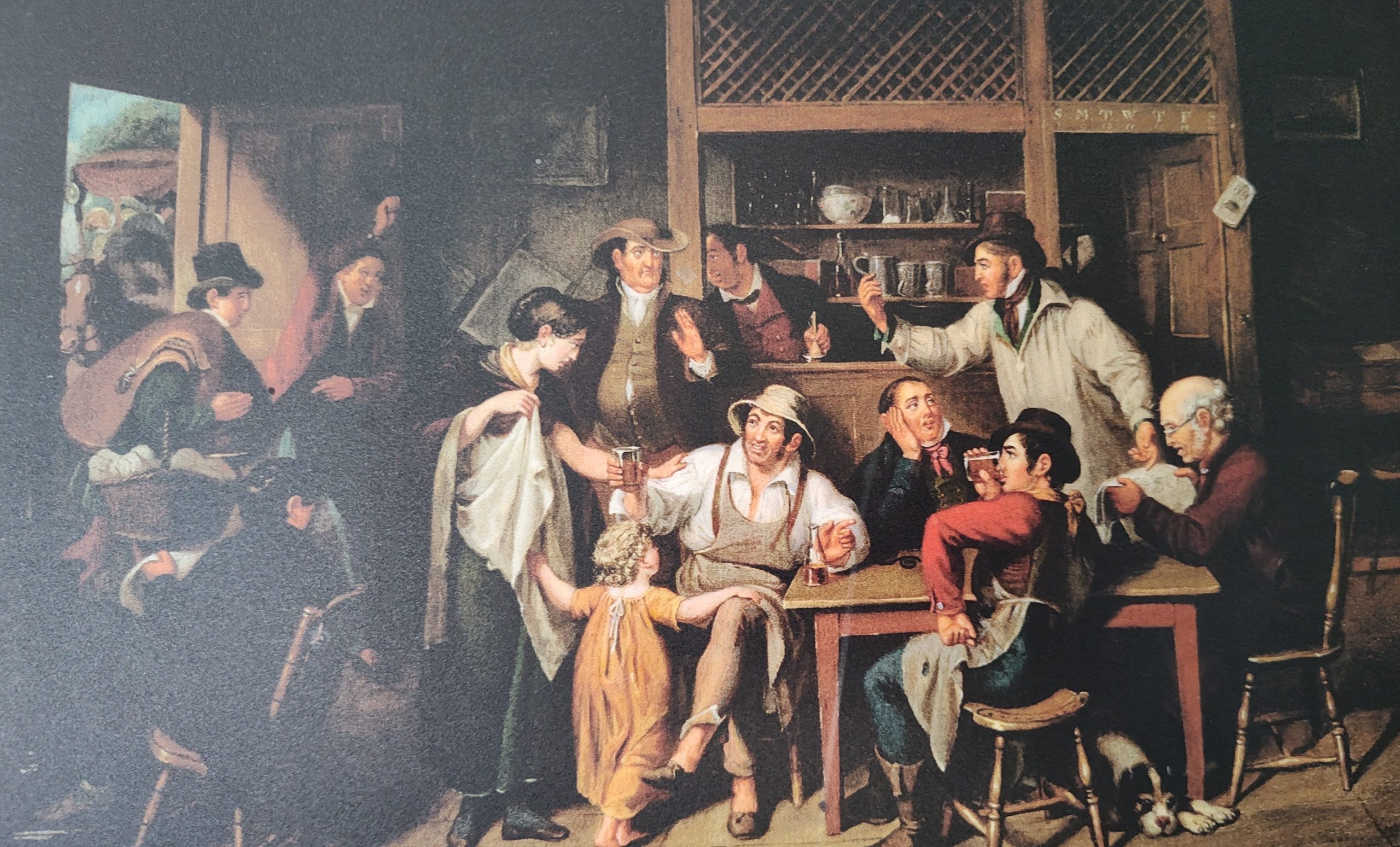
Photo Credit: Michigan Department of Natural Resources Cambridge Junction State Park
That’s right, the residents of Cambridge Junction would attend services at Walker Tavern, hearing Reverend Lyster’s sermon each Sunday. That was until 1854 when community leaders had decided to fund the massive construction project of St. Michael’s and All The Angels Episcopal Church which still has a congregation and holds services today!
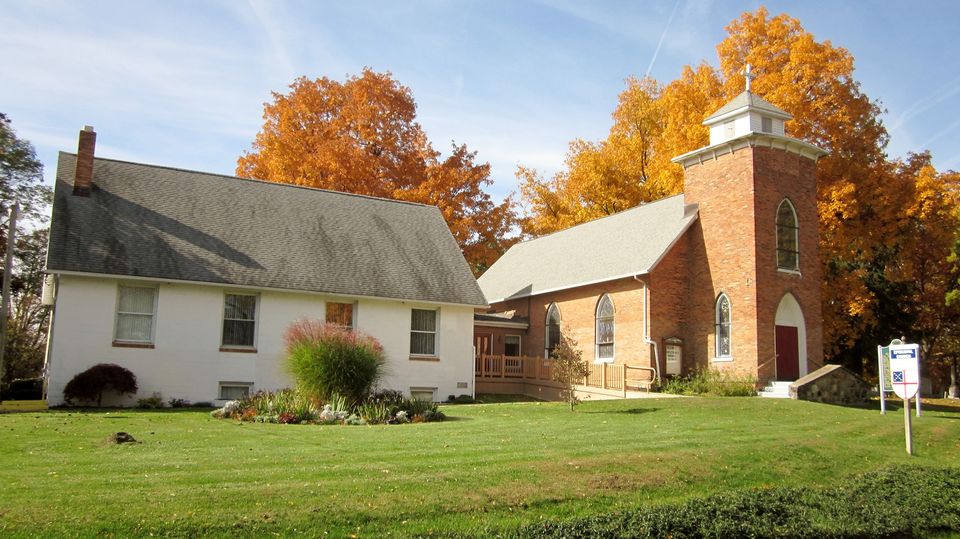
Photo Credit: St. Michael’s Facebook page

Today, the 80-acre, Irish Hills venue, Cambridge Junction State Park, has three buildings, including a barn. It’s a popular spot for today’s travelers, too, as it holds nearly 200 years of history.
Thank you for joining Chuck and I as we stepped over the threshold of history. Our thanks to Amy who had taken time to give us a personal tour. I appreciate those who help us realize the similarities and differences of the lives which have come before this generation. Stay curious and make memories!
Related Links:
Join us on our journey along US12, Chicago Road, Michigan Avenue in our YouTube video.
Michigan’s US-12 Heritage Trail book is available on Amazon.
Restless Viking merchandise is now available!
Resources:
Michigan’s US-12 Heritage Trail book by Gladys Saborio and Susan Kosky published June 2015
Amy, docent historian
MLive article October 2014
Cambridge Junction Historic State Park DNR website
Irish Hills Brooklyn, Michigan Clio website
The Smithsonian Postal Museum website
Preble County Historical Society Facebook page


